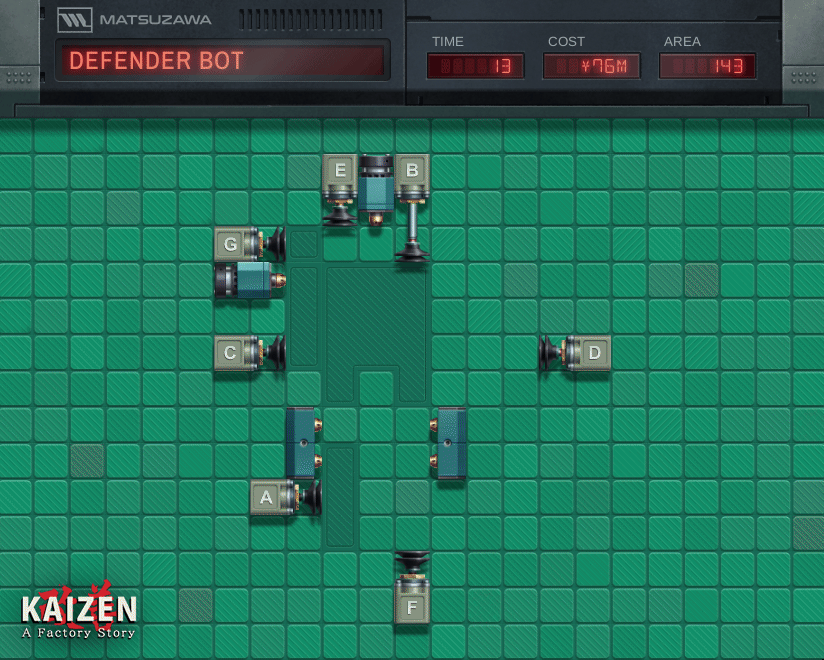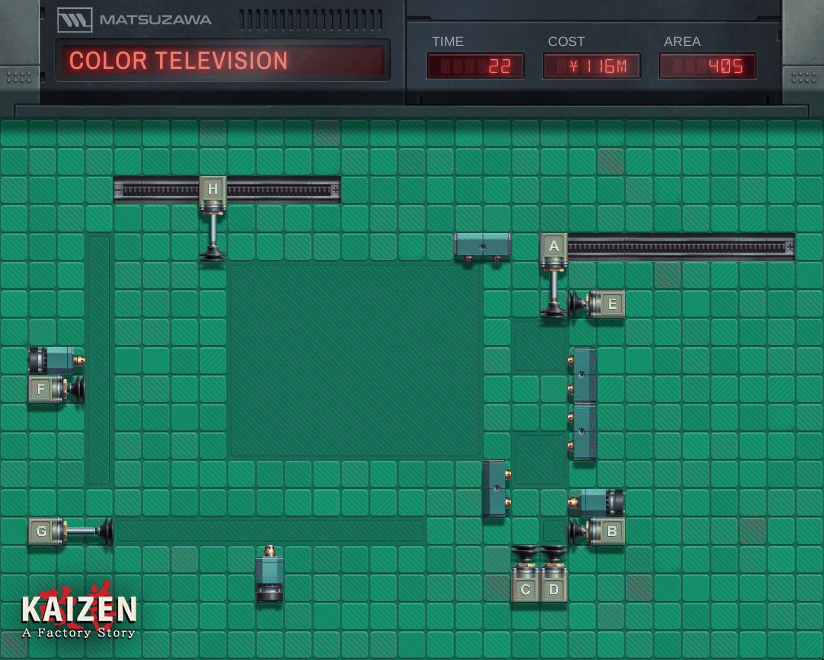Platform:
PC
Released:
July 14, 2025
Publisher:
Astra Logical
Developer:
Coincidence
Any big fans of order of operations, click clacking pieces together in the right order, and a satisfying gameplay loop will be very excited to hear that Kaizen: A Factory Story is headed by Zach Barth and his team at Coincidence, who are known for their mechanical puzzlers. Known for Exapunks and Opus Magnum, Zach and his team are always dipping their toes into the mechanical and automated.
Kaizen: A Factory Story opens with young and enthusiastic David Sugimoto heading to Japan from the US for his very first job. He’s excited to get settled in and start working with the sales team at Matsuzawa Manufacturing, only to arrive and find that he is asked to work designing automated production lines instead. David assumes at first that it’s just a bid to get him more familiar with what the company offers before he gets stuck into sales, but the more time he spends on the production line, the more it seems like this might be his job after all.

Working alongside his friendly manager Ohyama and the factory assistant Tomoe, who, much like David, clearly has more ambitious goals than what her position offers her, David travels across Japan, helping to design efficient production lines for a variety of businesses. You work with plastic food, appliances, clothes and even more. There’s seemingly no business in 1980s Japan that wouldn’t love to take advantage of your design skills.
When building a production line, all the pieces available are laid out on either side of an assembly mat, where all of the designing actually happens. The first few stints spent on the production line are simple as Kaizen: A Factory Story establishes its key fundamentals, you cannot place two of an object, an object can only be duplicated by pushing or flipping it away from its original place point, and a collision with any object during the process will break your machine.
At first, you start with only the tools to push/pull or join pieces together. Then, as the game progresses, new tools are added, and the objects being created have so many more pieces and steps required to create them. All of the tools make very satisfying noises; it’s snappy and addictive. Working on a production line is also very intuitive. If, for some reason, the machine stops working, it’s easy to rewind and move forward in the timeline to figure out what part is breaking the machine and what can be changed to fix it.
The process of creating a production line becomes daunting very quickly. My first roadblock was when I needed to build a toy Gundam, and it took me a very long time to wrap my head around rotating pieces, as the direction they rotate is dependent on the positioning of the tool you are using to rotate them, much like how it would work in real life.
“It’s difficult but satisfying to find just the right way to flip or push your pieces…”
Once you have a full set of tools, moving the pieces around and stationary joining tools like riveters and welders, it can feel like you have no space left to do the assembly. It’s difficult but satisfying to find just the right way to flip or push your pieces to get them all joined together at the end without breaking your machine. Kaizen: A Factory Story also plays out the assembly process after you have finished building the production line, and it’s utterly entrancing to watch all the pieces moving in tandem to create something, especially knowing you are the one who laid them out in the first place.
Cute moments between the characters break up the time spent puzzling over assembly lines, with sweet little bite-sized interactions that give more insight into David and his coworkers. David also regularly receives letters from his parents back in the US that show more about him and his life back home.

These moments never overstay their welcome and connect back into the wider story of David and his uncertain position within the company. I really appreciated a joke where David mentioned the concept of a six-pack of beer, which led his coworkers to assume that he just loved drinking so much that he always bought six at once, because they didn’t understand that beer just comes in six-packs in Western countries.
One of my only complaints with the game is that I wish there were a sort of tip system that could provide tips related to the specific object that you are working to assemble. This is because I often found myself completely stumped on a level and was unable to think of a different way to do things until I asked someone else to have a look, and the help of a different set of eyes finally helped me to uncover the solution. Without the help of another person, I don’t know if I even would have finished some of those levels, so something simple like ‘try flipping objects onto a cutter’ would have been all I needed. Though that may just be a skill issue.
8.5
Great
Positive:
- Satisfying mechanical gameplay loop
- Great difficulty curve
- Engaging characters break up the puzzling nicely
Negative:
- Easy to get stumped on some levels
Overall, Kaizen: A Factory Story is a brilliantly made game that creates a difficult, but satisfying experience with likable characters and an engaging story to boot. It’s always exciting when it offers up a new tool to use, and you can figure out all the different ways it can be used. On top of that, the character interactions were always fun to read. Maybe this is better than a boring job in sales after all!











